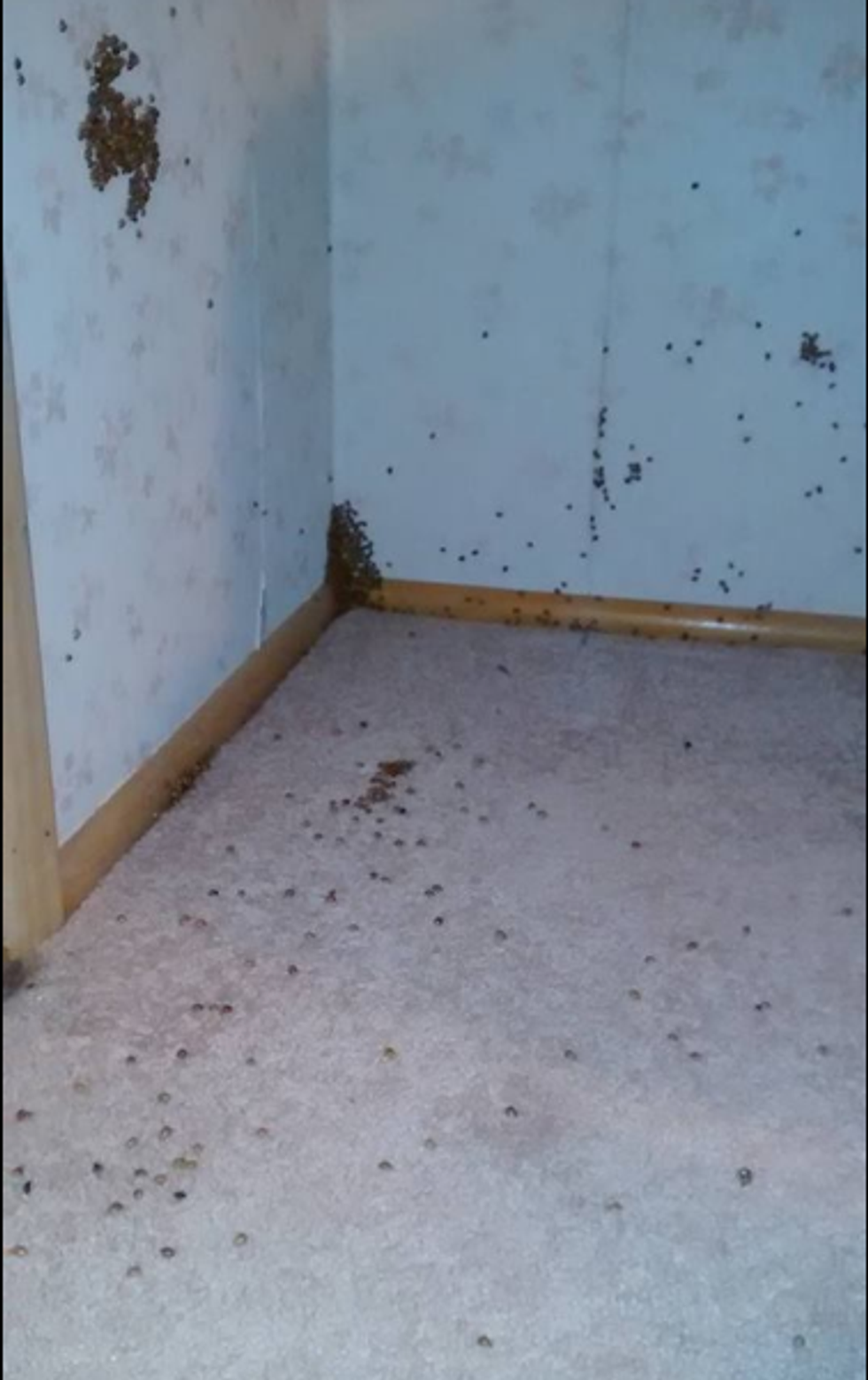"Ladybug infestation," my friend Sharon Mast wrote, after sharing the photo below.
I had noticed the tiny creatures gathering in an empty house I am re-painting for a friend. They looked like ladybugs, except they were yellow. I wondered what they were. Later, I was talking to one of my classmates at Sterling, and he said one of the football players had complained about them, too.
"He said, 'They bite so much that I don't even feel like going out for practice!'"
Now I was curious. Ladybugs don't bite, so what could these be?
I called the Reno County Extension Office, and they offered that I could pick up information they had prepared, and they told me what these 'yellow ladybugs' really are: Asian Lady Beetles.
Fun fact: the National Geographic says ladybugs are also known as lady beetles, and confirmed what the Extension Office handout said about this bug family. (And yes, they are bugs, according to the article I linked.)
"Most ladybugs voraciously consume plant-eating insects, such as aphids, and in doing so they help to protect crops."
This may be why they were brought into the United States. The Hutchinson News says,
The multicolored Asian Lady Beetles were first imported into the U.S. back in the 1800s by the USDA, and several times since then, according to Whitworth.
Farmers like my dad love bugs who prey on crop-eating insects, but I'm not sharing the love for this particular yellow strain in the family. They crawl in through the cracks in houses, especially around windows, which is very inconvenient when I am trying to paint the trim around the windows.
I had never seen the Asian Lady Beetles inside in such numbers, and I've lived in Kansas for years. They have proliferated this summer since the sugarcane aphids were abundant, the Hutchinson News reported.
The Asian Lady Beetles also like to choose to hole up inside buildings for the winter, unlike the rest of their family.
They are attracted to light colored buildings; especially those that receive direct sunlight. Once several beetles have found an attractive site, they will emit a chemical signal to bring in their friends. Unfortunately, their friends can number in the tens or hundreds of thousands.
And indeed, they do bite. The Extension Office reassures us,
Fortunately, they are unable to break the skin surface.
What a relief.
Smashing or shooing away the Asian Lady Beetles is not a good way to get rid of them, since they release their blood, which smells and leaves an orange stain. The Extension Office advises breaking out a vacuum cleaner and sucking them up, then removing the bag, sealing it, and disposing it.
Another option is sprinkling insecticides around your house. Look for products with "bifenthrin, cyfluthrin, deltamethrin, esfenvalerate, and tralomethrin," the Extension Office handout says.
Anyone else going to join me with using a vacuum on these Asian Lady Beetles? It seems like the most painless death I can give them, and for now that's how we'll coexist most happily.




















